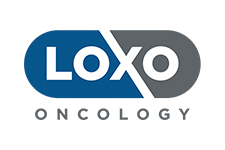Loxo Oncology, Inc.

281 Tresser Blvd.
9th Floor
Stamford, CT 06901
Phone: 203-653-3880
Website: https://www.loxooncology.com/
General Information:
Loxo Oncology is a biopharmaceutical company innovating the development of highly selective medicines for patients with genetically defined cancers. Our pipeline focuses on cancers that are uniquely dependent on single gene abnormalities, such that a single drug has the potential to treat cancer with dramatic effect. We believe that the most selective, purpose-built medicines have the highest probability of maximally inhibiting the intended target, thereby delivering best-in-class disease control and safety. Our management team seeks out experienced industry partners, world-class scientific advisors and innovative clinical-regulatory approaches to deliver new cancer therapies to patients as quickly and efficiently as possible. For more information, please visit the company’s website at www.loxooncology.com.
Research Activities:
Oncology
LOXO-101
LOXO-101 is a potent, oral and selective investigational new drug in clinical develop-ment for the treatment of patients with cancers that harbor abnormalities involving the tropomyosin receptor kinases (TRKs). In an ongoing Phase 1 clinical trial, LOXO-101 has demonstrated encouraging preliminary efficacy. LOXO-101 is also being evaluated in the NAVIGATE global Phase 2 multi-center basket trial in patients with solid tumors that harbor TRK gene fusions and the SCOUT Phase 1 trial in pediatric patients including infantile fibrosarcoma.
Preclinical Product Pipeline
We are developing our next-generation selective TRK inhibitor, LOXO-195, which is capable of addressing potential mechanisms of acquired resistance that may emerge in patients receiving LOXO-101 or multikinase inhibitors with anti-TRK activity.
We have identified our Rearranged during Transfection, or RET, program as the one most likely to deliver our next IND candidate. We are designing a highly specific RET inhibitor that is intended to optimize on-target potency for RET fusions, activating mutations, and anticipated resistance mutations.
We are also designing an FGFR1-sparing FGFR inhibitor that has the potential to avoid many of the side effects that have been endemic to the FGFR class.
< RETURN TO MEMBER DIRECTORY